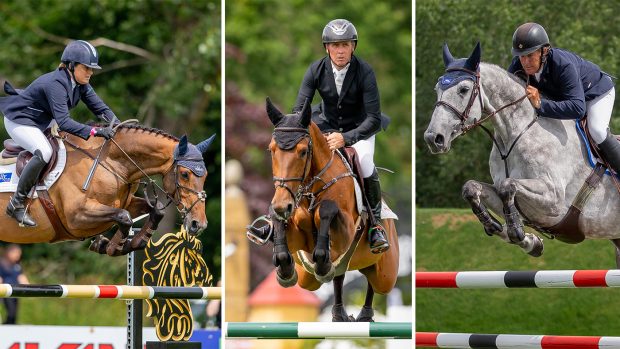William and Pippa Funnell shared their top tips for producing young showjumpers during a demonstration at the Blue Chip Winter Showjumping Championships 2015. Here are the highlights...
1. Back to basics
“Everybody wants to be in the ring competing but most of the work is done at home,” says William. “The more complicated stuff comes down to doing the basics well.
“It’s the same with a rider, if you have a bad technique you’re only going to get so far up the ladder. You must be disciplined and consistent with the messages you give the horse.”
2. Keeping balanced
“It’s very important to keep your balance with young horses,” adds Pippa. “You don’t want them to associate spooking with loss of balance.
“Try and follow them wherever they go so they don’t learn to tighten whenever they spook.”
3. Check yourself
“I do little checks with my body to make sure I’m balanced — put an arm behind you and if they get tight just relax a little bit,” explains Pippa.
“You can also try taking out your stirrups out and let legs get a bit longer while sitting equally on both seat bones — it’s that core strength that you need to hold the horse, not the hands.
“I also move my legs away from the saddle and nothing should change. By doing these little checks like that you can see if your balance is interfering with your horse.”
4. Keep the rhythm
“ Usually when you come round a corner towards a jump you want to pull or kick and they find it really difficult to use the same canter and stay in the same rhythm,” says William.
“We all get so hung up on having a correct distance that we end up pulling pushing the horse which make it really difficult for it to use its body.”
Continued below…
Related content from horseandhound.co.uk

Blue Chip Winter Showjumping Championships roll of honour [PICS]
The Blue Chip Winter Show Jumping Championships at Hartpury (8-12 April) provided us with some thrilling action and worthy winners.
5. Take your time
“It’s a long pathway, there are no shortcuts and some horses take a lot longer than others,” says Pippa.
“Some days your horse will come out differently, we must remember that each horse’s brain is different.”
6. Learn from others
Pippa and William both served apprenticeships to master the basics.
“Through those apprenticeships both of us learnt how to sit on so many different types of horses,” says Pippa.
7. Take care with transitions
“You may think you could get away with a bad transition because it’s not going to cost you the competition — where as in eventing you’re getting a five instead of an eight and suddenly you can lose — but actually in the long run it will catch up with you,” says Pippa.
8. Self-carriage
William explains the importance of horses being able to carry themselves: “It [jumping] is complicated enough — it’s really important they carry you and must be between hand and leg. They must stay there and that’s the discipline they have to learn.”
9. Stay straight
“If the horse is crooked it will push off more with the leg that’s closest to the fence,” says William. “We want a young horse to be able to come back off a fence and sit onto its hind leg and jump straight.
“We need to be able to control the body in the turn. You can improve straightness by doing counter canter and shoulder in.”
Pippa adds: “As much as we work on horse’s straightness you must think about your own straightness too.
“A good exercise to do on the rein you lean out is to look to the outside — it will help you to ride straighter.”



